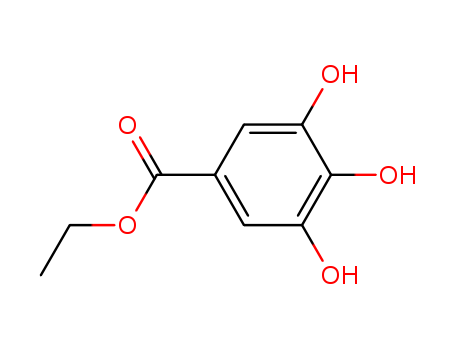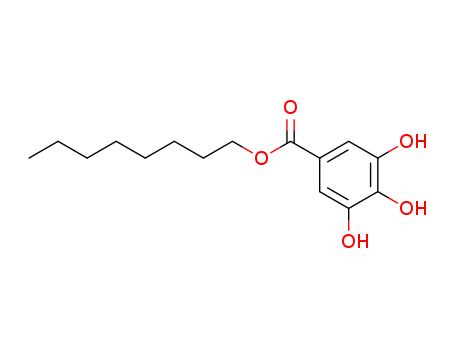- Product Details
Keywords
- Pyrogallic acid
- 1,2,3-Benzenetriol
- 1,2,3-trihydroxy-benzene
Quick Details
- ProName: Pyrogallol
- CasNo: 87-66-1
- Molecular Formula: C6H6O3
- Appearance: White crystalline powder
- Application: Used as chemical analysis reagents,red...
- PackAge: 25kg/fibre drum, with inner plastic ba...
- ProductionCapacity: 150 Metric Ton/Year
- Purity: 99.2%min
- Storage: Avoid moisture and light; hermetically...
- LimitNum: 0 Metric Ton
- Assay: ≥99.2%
- Insoluble in water: ≤0.20%
- Melting point: 130-136℃
- Loss on drying: ≤0.50%
- Ignition residue: ≤0.10%
Superiority
Pyrogallol is an organic compound with the formula C6H3(OH)3. It is a white, water-soluble solid although samples are typically brownish because of its sensitivity toward oxygen.It is one of three isomeric benzenetriols.
It is produced in the manner it was first prepared by Scheele (1786): heating gallic acid. Presently gallic acid is obtained from tannin. Heating induces decarboxylation:
Because tannin is expensive, many alternative routes have been devised. An alternate preparation involves treating para-chlorophenoldisulphonic acid with potassium hydroxide, a variant on the time-honored route to phenols from sulfonic acids.
The aquatic plant Myriophyllum spicatum produces pyrogallic acid.
When in alkaline solution, it absorbs oxygen from the air, turning brown from a colourless solution. It can be used in this way to calculate the amount of oxygen in air, notably via the use of the Orsat apparatus.
Details
One can find its uses in hair dyeing, dyeing of suturing materials and for oxygen absorption in gas analysis. It also has antiseptic properties. Pyrogallol was also used as a developing agent in black-and-white developers, but its use is largely historical except for special purpose applications. Hydroquinone is more commonly used today. It is also used in isolation of inert gases from a mixture of gases, which requires absorption of oxygen from the mixture.
Use in photography
Though a popular photographic developing agent in the 19th and early 20th centuries, pyrogallol largely fell out of favor around the 1920s, although it was still used by a few notable photographers including Edward Weston. In those days it had a reputation for erratic and unreliable behavior, due possibly to its propensity for oxidation. It experienced a revival starting in the 1980s due largely to the efforts of experimenters Gordon Hutchings and John Wimberley.
PMK
Hutchings spent over a decade working on pyrogallol formulas, eventually producing one he named PMK for its main ingredients: pyrogallol, Metol, and Kodalk (the trade name of Kodak for sodium metaborate). This formulation resolved the consistency issues, and Hutchings found that an interaction between the greenish stain given to film by pyro developers and the color sensitivity of modern variable-contrast photographic papers gave the effect of an extreme compensating developer. From 1969 to 1977, Wimberley experimented with the Pyrogallol developing agent. He published his formula for WD2D in 1977 in Petersen's Photographic. PMK and other modern pyro formulations are now used by many black-and-white photographers.
The Film Developing Cookbook has examples.
510-pyro
Another developer mainly based on pyrogallol was formulated by Jay DeFehr. The 510-pyro, is a concentrate that uses Triethanolamine as Alkali, and pyrogallol and phenidone as combined developers. This developer has both staining and tanning properties and negatives developed with it are immune to the callier effect. It can be used for small and large negative formats.
The Darkroom Cookbook (Alternative Process Photography) has examples.


 Premiumsupplier
Premiumsupplier 





